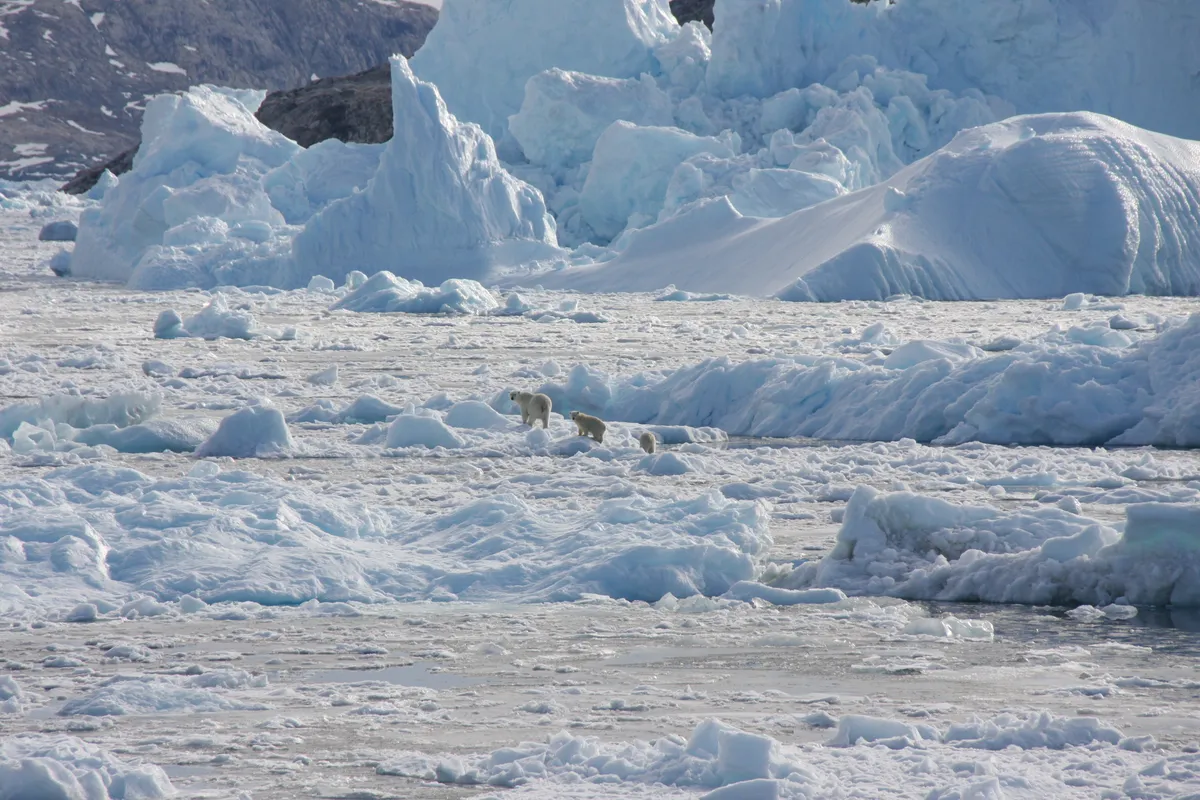An isolated, genetically distinct population of polar bears has been discovered in southeast Greenland where it is thriving despite a lack of summer sea ice – conditions projected for the High Arctic later this century as temperatures rise.
The biologists behind the discovery estimate the population to consist of a few hundred individuals that have been cut off for about 200 hundred years from neighbours to the north by mountains.
“I suspect that some founding members of the population were carried south on the sea ice from Northeast Greenland,” says Kristin Laidre of the University of Washington, the lead author of the team’s report, published in the journal Science.

The discovery raises the number of distinct sub-populations of polar bears to 20.
The biologists believe the bears are able to survive in the absence of summer sea ice by hunting on fresh-water ice that has sheared off from glaciers in the fjords. This raises the possibility that glacier-fed fjords may provide a refuge for polar bears should Arctic summer sea ice continue to decline.
Explore this issue:
- Separating fact from fiction: polar bears and climate change
- Polar bear guide: where they’re found, what they eat, and why they’re threatened
- Stunning photos of polar bear families in Canada
© Christine Haines/Getty
Susan Crockford, an independent scientist who studies the historical distribution of polar bears, but was not involved in this research, says that the study provides evidence that polar bears can thrive in areas without summer sea ice. She notes that, crucially, sea ice is available in the spring, when mothers are feeding cubs.
"Polar bears are unlikely to require such refugia because summer hunting is not a crucial activity,” says Crockford. “Fjords fed by glaciers are important habitats because of the shorefast ice that forms in them every winter and it turns out, there are rather a lot of them across the Arctic, which could support a sizeable bear population."
Please note that external videos may contain ads.
Laidre is less optimistic. “Glacier ice may help small numbers of polar bears survive for longer periods under climate warming, and may be important to the species’ persistence, but it is not available for the vast majority of polar bears,” she says. “Loss of Arctic sea ice is still the primary threat to all polar bears. This study does not change that.”
Main image: A southeast Greenland polar bear on glacier, or freshwater, ice. © Thomas W Johansen/NASA Oceans Melting Greenland